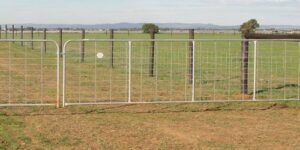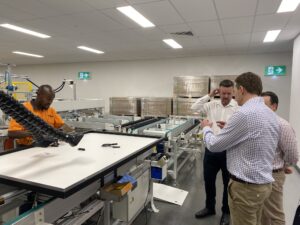Taking care of your livestock is essential. Many things go into running a successful farm, from feeding them well to ensuring they’re safe.
 One way to ensure the safety of your animals is by installing a gate. These gates can prevent people from entering private property and are effective at keeping livestock away from predators. This is why it is essential to ensure that rural farm gates Adelaide are made of solid materials.
One way to ensure the safety of your animals is by installing a gate. These gates can prevent people from entering private property and are effective at keeping livestock away from predators. This is why it is essential to ensure that rural farm gates Adelaide are made of solid materials.
Safety
A gate is a crucial part of the fencing system on a rural property. It is used to keep out trespassers and prevent animals from wandering into areas they are not supposed to. However, it also plays a crucial role in protecting livestock from predatorsThey should be able to withstand the elements and resist rusting or breaking. They should also be easy to open and close. Luckily, there are plenty of choices when it comes to farm gates.
One popular type of gate is the five-bar field gate, which has been around for centuries and is still commonly used on farms. This type of gate is usually crafted from tanalisedtanalised timber and can be purchased in different sizes, ranging from three to 12 feet. This type of gate is highly durable and can easily withstand the elements.
Another option is the timber country gate, which is similar to the five-bar field gate but has a more decorative design. This gate is often crafted from tanalisedtanalised timber or hardwood and has several bracings that help maintain the gate’s overall stability. This type of gate is not as durable as the five-bar field gate but can still hold up to the elements.
Finally, there is the metal yard gate, which is a highly sturdy and durable option. This gate is typically made from galvanised steel and can be customised to suit the individual user’s needs. This gate is versatile and can be installed in almost any property type. It can even be hung from existing fencing to add an extra layer of security and safety.
As the name suggests, a rural farm gates Adelaide is not found in estates or other residential areas. Instead, it is commonly found in livestock farms and countryside homes. They are designed to section off and separate various paddocks and livestock yards and can be used for multiple purposes.
Security
As with all property owners, the safety of their family and livestock is a top priority. Rural fencing effectively keeps animals safe from predators while keeping unwanted visitors off your land. Adding a gate to the fence system is another level of protection, as it keeps unauthorised vehicles and visitors out, preventing theft and other property damage. It also prevents animals from escaping the farm or wandering onto other properties.
Choosing the right gate for your farm is essential. It needs to fit the style of your property and be sturdy enough to withstand the elements. It should not be too heavy so it is difficult to open and close, especially when it’s raining or windy. It should be made of durable materials that will not rust or fall apart after prolonged exposure to the weather.
There are many different types of gates available on the market. Some are galvanised and look very natural, while others are more modern. You can even choose an entrance made of wood, which has undergone treatment to prevent it from rotting or becoming infested with pests. If you are looking for a traditional design, you may want to consider a five-bar field gate, the most common type on a farm in the country.
Adding a gate to your property can also improve its aesthetics. A gate can add a rustic charm and complement the rest of your farm’s features. It can also increase the overall value of your property. It is a good idea to have a gate on your property, whether you have animals or not. It can protect your property, improve its looks, and make it easier to manage.
The gate is a crucial feature on a rural farm gates Adelaide. It is used to keep animals safe from outside predators and other threats. It can also protect crops and raw farmland from unwanted intruders. The gate is also used to improve the efficiency of farming operations by keeping animals and equipment fenced in. It can also help to keep food fresh longer and reduce the risk of food waste.
Aesthetics
Whether you own a cattle farm or a country residence, a gate is a must-have accessory for your property. It not only keeps trespassers and other unauthorised persons away but also provides security for livestock and pets. This is especially important for farms that are surrounded by neighbouring properties. Fortunately, the market offers many options for agricultural gates, from steel to galvanised timber. These gates not only provide security but can also complement your home’s aesthetic.
 Photovoltaic (PV) cells convert solar energy to electricity using semiconductor material that absorbs light emitted by the sun and generates an electric current. The generated power can then be used to power household, office, and industrial appliances and equipment; alternatively they may connect directly to the electricity grid for lower electricity prices when there is more solar availability than required.
Photovoltaic (PV) cells convert solar energy to electricity using semiconductor material that absorbs light emitted by the sun and generates an electric current. The generated power can then be used to power household, office, and industrial appliances and equipment; alternatively they may connect directly to the electricity grid for lower electricity prices when there is more solar availability than required.